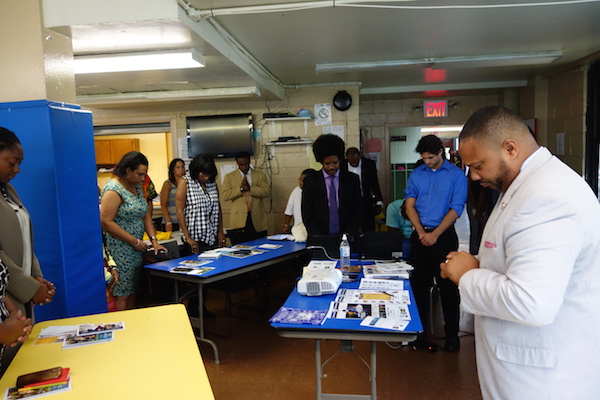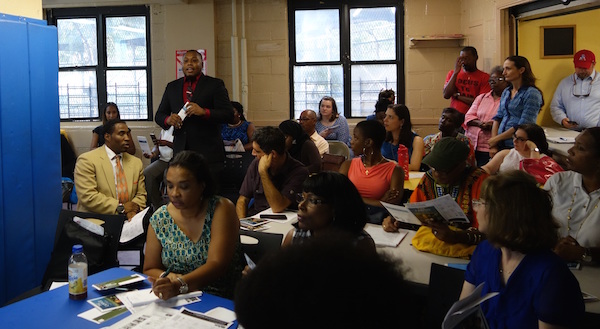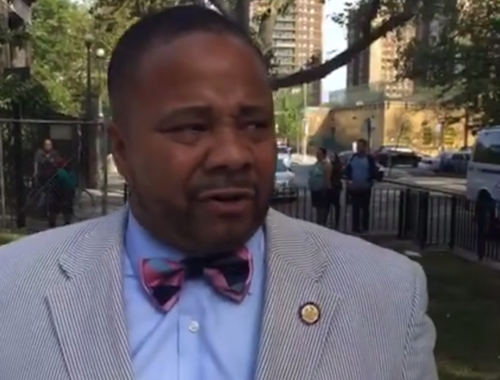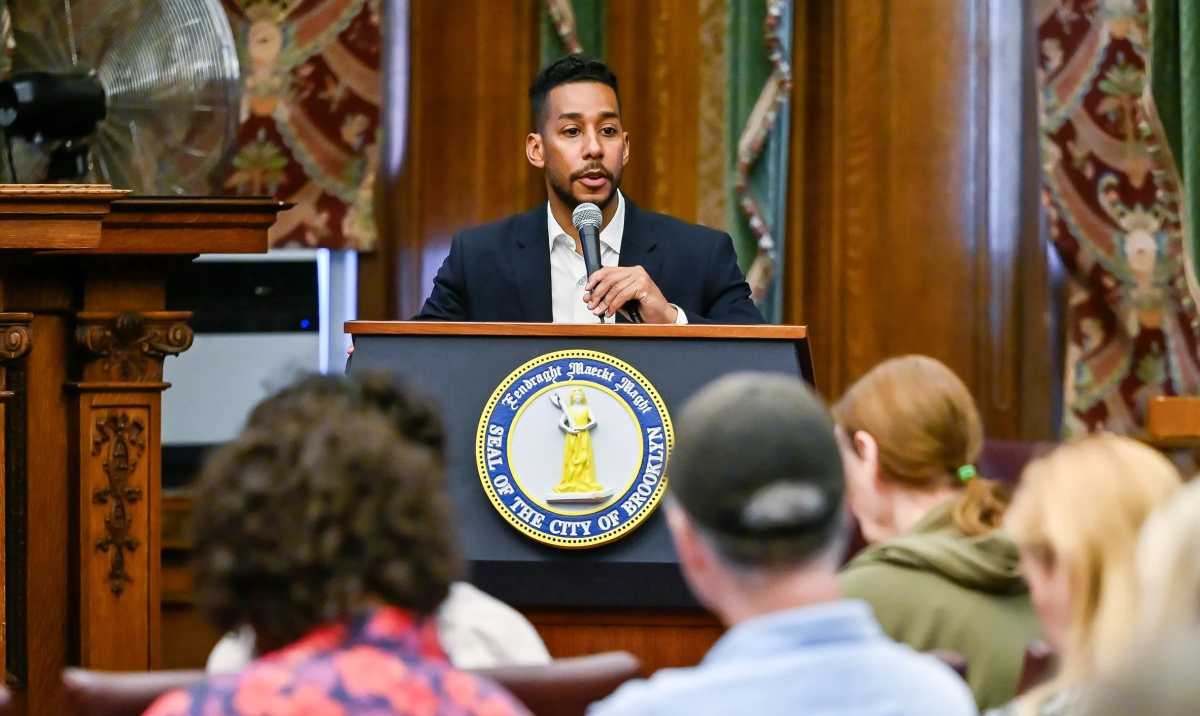Central Brooklyn State Sen. Jesse Hamilton yesterday learned a tragic first-hand lesson of the difficulties involved in implementing his pioneering plan to bring the the first technology and wellness hub at a public housing site in the United States.
That after Hamilton, his senate staffers, and more than 30 leaders of community based organizations were gathering at the Howard Houses Community Center in Brownsville for a stakeholders meeting on the forthcoming community project, dubbed “The Campus,” when three shots rang out in the plaza nearby, and a young man was hit and gravely wounded.
After waiting for an ambulance to arrive for what seemed like an eternity, and faced with the decision whether to proceed or postpone the stakeholders meeting, Hamilton decided to proceed as the shooting further affirmed his strong belief that “The Campus” will help provide much needed positive energy and hope for the future for the impoverished neighborhood. So the meeting began with prayers as the assembled group saw the young victim taken away in an ambulance just outside the windows.

Then for more than an hour and a half, the group discussed the Campus, focusing on four tracks: Violence Prevention; Health and Wellness; Career Development and Entrepreneurship; Technology, Coding and App Development.
Modeled on a college campus, the central hub of initiative is three sites all within walking distance of one another: Howard Houses, Brownsville Library P.S. 298 / Brooklyn Collaborative Middle School.
Near the close of the meeting, at around 5 p.m., the assembled group learned the young man who was shot died due to his injuries.
Police later identified the 28-year-old victim as Rysheen Ervin. He was the 10th murder victim of the year for the neighborhood, according to official NYPD statistics.
“The people we brought together today aim to prevent shootings like the one we witnessed outside the windows of our meeting room . We are committed to stopping the violence, to ending intergenerational poverty in Brownsville, to helping neighborhood residents get the opportunities they deserve. We can’t continue to lose young people to senseless violence,” said Hamilton.

Hamilton’s office also released the following that highlights some of the challenges Brownsville faces:
One survey of Brownsville community residents found “nothing to do after school” as one of the top ten youth problems in Brownville, with 72% of respondents ages 25 and older saying lack of after school programs was a big problem and 58% of respondents ages 16-24 saying it was a big problem. Other top 10 problems identified in the survey included, unemployment, few adult role models, and a lack of other educational/training opportunities. (Source: Center for Court Innovation “Community Perceptions of Brownsville” 2011 http://www.courtinnovation.org/sites/default/files/documents/Brownsville%20Op%20Data%20FINAL.pdf )
In District 23 during the 2012-2013 school year: 39.9% of K-5 grade students had chronic or severe absence, 29.7% of 6-8 grade students had chronic or sever absence, and 58.6% of high school students had chronic or severe absence (chronic absence defined as 18-35 absences, severe absence defined as 36 or more absences). (Source: “A Better Picture of Poverty, What Chronic Absenteeism and Risk Load Reveal About NYC’s Lowest-Income Elementary Schools”, 2014, http://www.attendanceworks.org/wordpress/wp-content/uploads/2014/11/BetterPictureofPoverty_PA_FINAL_001.pdf )
NYC School District 23, covering Brownsville, ranks as among the school districts whose students face homelessness at the highest rates – ranking number two of Brooklyn’s twelve school districts, and number four of New York City’s thirty-two districts. (Source: Atlas of Student Homelessness in New York City 2015, http://www.icphusa.org/PDF/reports/OnTheMap_TheAtlasofStudentHomelessnessinNewYorkCity2015.pdf )










